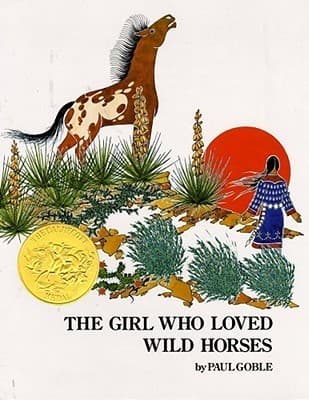
Book Review Summary: The Girl Who Loved Wild Horses
Introduction
"The Girl Who Loved Wild Horses" by Paul Goble is a captivating children's book that tells the story of a Native American girl's deep connection with horses. Through beautiful illustrations and simple yet powerful words, Goble brings to life the girl's journey of love, friendship, and transformation. In this article, we will delve into the book's summary, analyze readers' views, and explore the reasons for both recommending and not recommending this book.
About Paul Goble
Paul Goble, the author of "The Girl Who Loved Wild Horses," was an award-winning author and illustrator known for his vivid illustrations and retelling of Native American folktales. Born in England, Goble studied at the Central School of Art in London and later became a United States citizen. His life-long fascination with Native American culture led him to create books that accurately depicted their customs, clothing, and surroundings. Goble's illustrations in "The Girl Who Loved Wild Horses" showcase his talent for capturing the beauty and spirit of the Native American people and their relationship with horses.
Analysis of Views
-
Beautiful artwork: Many readers praised the book's illustrations, stating that they were vivid, colorful, and captivating. The illustrations in "The Girl Who Loved Wild Horses" were described as bold, with strong geometric designs and a raw, natural feel. The use of earth tones added depth and richness to the images, making them stand out.
-
Magical storytelling: Readers appreciated the magical quality of the story. The tale of a girl who loved wild horses and found her place among them was seen as enchanting and inspiring. The story's blend of mythology and realism resonated with readers, creating a sense of wonder and imagination.
-
Connection to nature: The book highlights American Indian beliefs in humanity's connection to nature. Readers appreciated the exploration of this theme, which emphasizes the importance of living in harmony with nature. The story shows how the girl becomes one with the horses, emphasizing the interconnectedness of all living beings.
-
Interesting plot: While some readers found the plot predictable by folktale standards, others found it interesting and engaging. The story of a girl who befriends wild horses and becomes one with them captured their imaginations. The journey of self-discovery and transformation resonated with readers, making the story both relatable and inspiring.
-
Lack of specific cultural context: Some readers expressed concern about the lack of specific cultural context in the book. While the illustrations accurately depicted Native American clothing and customs, there was no mention of which tribe the girl belonged to or any acknowledgement of Paul Goble's sources or possible sources. This absence made some readers question the authenticity of the story and raised concerns about cultural appropriation.
Reasons for Recommendation
-
Beautiful artwork: The stunning illustrations in "The Girl Who Loved Wild Horses" make it a visual feast for readers. The vivid colors and intricate details create a captivating reading experience that will leave readers in awe.
-
Magical storytelling: The magical quality of the story captures the imagination of young readers. The tale of a girl who finds her place among wild horses is both enchanting and inspiring, making it a great addition to any library collection.
-
Connection to nature: The book explores American Indian beliefs in humanity's connection to nature, making it an excellent choice for readers interested in environmentalism and sustainability. The story emphasizes the importance of living in harmony with nature, which resonates with many readers today.
-
Interesting plot: The story of a girl who becomes one with wild horses is engaging and thought-provoking. It encourages readers to explore their own sense of belonging and self-discovery, making it a valuable addition to children's literature.
Reasons for Not Recommendation
-
Lack of specific cultural context: Some readers felt that the lack of specific cultural context diminished the authenticity of the story. Without clear information about the tribe or sources used, there is a concern that cultural appropriation may be present in the book. This may be a reason for some readers to avoid recommending it.
-
Predictable plot: While some readers found the plot interesting, others found it predictable by folktale standards. The story's predictability may make it less engaging for readers who prefer more complex or unexpected narratives.
Conclusion
"The Girl Who Loved Wild Horses" by Paul Goble is a beautifully illustrated children's book that tells the story of a Native American girl's deep connection with horses. With its magical storytelling, exploration of nature's interconnectedness, and engaging plot, this book has captured the hearts of many readers. However, some concerns about cultural authenticity and predictability may prevent some readers from recommending it wholeheartedly. Overall, "The Girl Who Loved Wild Horses" remains a captivating tale that will continue to inspire young readers for generations to come.